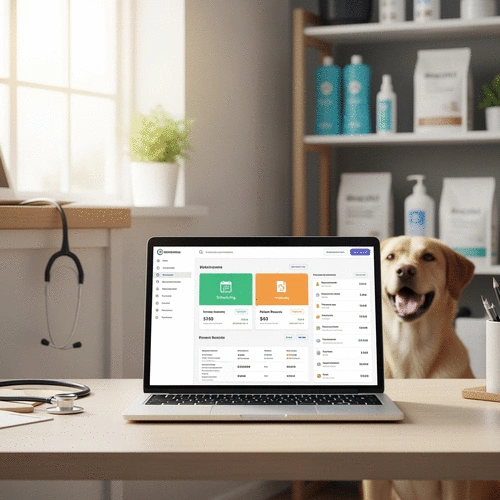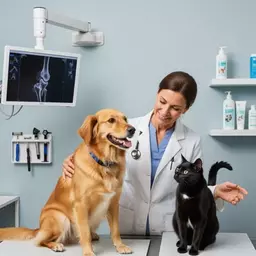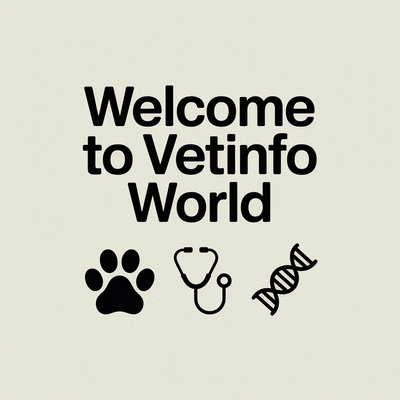In the realm of veterinary medicine, the right technology can redefine how we deliver care. Did you know that a well-chosen veterinary practice management software can enhance client satisfaction and streamline operations simultaneously? Discover how investing in the right tools can lead to transformative changes in your practice.
What You Will Learn
- Choosing the right veterinary practice management software enhances operational efficiency and client communication.
- Cloud-based solutions and telehealth options are key trends shaping modern veterinary practices.
- Investing in software can lead to streamlined operations, improved data management, and increased client satisfaction.
- User reviews and testimonials provide essential insights that can guide your software selection process.
- Understanding the implementation process is crucial for a smooth transition to new software solutions.
Key Features of Veterinary Practice Management Software
The right software can significantly impact your practice's success by streamlining operations and enhancing client interactions. Below are essential features to consider.
Appointment Scheduling
Intuitive system to reduce no-shows and optimize staff time.
Medical Records Management
Easy access to patient histories boosts the quality of care.
Invoicing and Billing
Automated processes improve revenue flow and client satisfaction.
Client Communication Tools
Text reminders and follow-up emails keep pet owners informed.
Understanding the Importance of Veterinary Practice Management Software
As a veterinarian with years of experience, I can tell you that choosing the right veterinary practice management software is a game changer. It's not just about efficiency; it's about providing the best possible care for our furry patients. The right software can streamline operations, improve client communication, and ultimately enhance the overall experience for both veterinarians and pet owners. In this section, we’ll explore why software selection is crucial and how it can transform your practice. For a deeper dive into upcoming changes in our field, consider reading about veterinary medicine trends for 2025.

Why Choosing the Right Software is Crucial for Your Practice
In today's fast-paced world, having the right tools at your disposal is essential. The veterinary field has evolved significantly, and so have the demands of pet owners. Selecting the correct management software can help you:
- Improve appointment scheduling and reduce wait times
- Manage medical records securely and efficiently
- Enhance client communication and satisfaction
- Optimize inventory management and billing processes
By investing in effective software, you're setting your practice up for success. It allows you to focus more on what truly matters—caring for animals and ensuring their well-being.
Overview of Current Trends in Veterinary Management Solutions
The landscape of veterinary management software is rapidly changing. New technologies are emerging, integrating features that cater to the evolving needs of veterinary practices. Some current trends include:
- Increased use of cloud-based solutions for accessibility
- Implementation of telehealth options for remote consultations
- Utilization of artificial intelligence for data analysis and diagnostics
- Enhanced mobile capabilities for on-the-go access
Staying updated on these trends enables veterinary practices to make informed decisions that align with their goals. Adopting new technologies not only improves efficiency but also elevates the standard of care provided to pets. For more insights into emerging technologies, explore innovations in animal research labs.
Benefits of Veterinary Software: Enhancing Practice Efficiency and Client Satisfaction
Investing in veterinary practice management software comes with numerous benefits. Here are some key advantages:
- Streamlined operations: Automated processes reduce the time spent on administrative tasks, allowing staff to focus on patient care.
- Increased client satisfaction: Efficient communication and appointment reminders lead to happier clients.
- Better data management: Easily accessible medical records and reporting tools enhance decision-making.
- Cost-effectiveness: While there may be an initial investment, the long-term savings from improved efficiency can be significant.
As I’ve experienced firsthand, the right software can revolutionize how a veterinary practice operates, leading to better outcomes for both pets and their owners. Are you ready to explore these game-changing solutions for your practice? Let's dive deeper into the specifics in the next section!
We Want to Hear From You!
What challenges have you faced when selecting veterinary practice management software? Share your thoughts below:
Summarizing Key Insights and Recommendations
As we explore the vast landscape of veterinary practice management software, it’s essential to identify key features that can significantly impact your practice's success. The right software should not only streamline operations but also enhance client interactions and improve overall efficiency. Here’s a summary of the vital features to consider:
- Appointment Scheduling: An intuitive scheduling system can reduce no-shows and optimize staff time.
- Medical Records Management: Easy access to patient histories boosts the quality of care.
- Invoicing and Billing: Automated billing processes improve revenue flow and client satisfaction.
- Client Communication Tools: Text reminders and follow-up emails help keep pet owners informed.
By focusing on these essential features, practices can make informed decisions that enhance both productivity and client satisfaction. Choosing wisely can lead to a more organized workflow and happier clients!

What to Consider When Comparing Software Options
When diving into the world of veterinary software solutions, there are several factors to keep in mind. Comparing options can feel overwhelming, but breaking it down can help make the process smoother. Here are the top considerations:
- Functionality: Ensure the software meets the specific needs of your practice, including any special services you offer.
- Integration: Look for systems that can seamlessly integrate with your current tools, such as lab equipment or accounting software.
- User Experience: A user-friendly interface decreases the learning curve for your staff and improves overall adoption.
- Support and Training: Consider the availability of customer support and training resources to assist your team during the transition.
By taking these factors into account, you'll be better equipped to select a software solution that aligns with your practice's unique needs.
Importance of User Reviews and Testimonials in Software Selection
User reviews and testimonials can provide invaluable insights into a software’s performance and reliability. At VetInfo World, we believe that real-world experiences are essential for making informed choices. Here are some reasons why you should pay attention to reviews:
- Authentic Feedback: Glean insights into how the software performs in a real practice, highlighting both strengths and weaknesses.
- Common Challenges: Understand the typical hurdles users face during implementation and how they overcame them.
- Feature Effectiveness: Learn which features are most beneficial from the perspective of actual users.
Leveraging user feedback can help you choose a software solution that not only meets your needs but also supports your practice in achieving its goals. For more insights on ensuring optimal pet health, check out this guide on global pet wellness clinics.
Taking Action: Next Steps for Implementing Software Solutions
Once you've narrowed down your software options, it's time to take action and implement the chosen solution in your practice. Let’s explore some practical next steps!
How to Approach Software Demos and Trials
Before committing to any software, I strongly recommend taking advantage of demos and trial periods. Here’s how to make the most of them:
- Prepare Questions: List specific questions related to your practice's needs and workflows to ensure all your concerns are addressed.
- Involve Your Team: Include your staff in the demo to gather diverse feedback on usability and functionality.
- Test Features: Focus on testing key functionalities that are crucial for your practice's daily operations.
By approaching demos thoughtfully, you’ll gain a clearer picture of how the software fits into your practice.
Encouraging Practices to Share Experiences and Feedback
In our community, sharing experiences is vital! Encouraging practices to communicate their feedback helps others in the decision-making process. Here are some ways to promote sharing:
- Host Discussions: Organize meetings or forums where veterinarians can discuss their experiences with different software.
- Utilize Social Media: Create a platform on social media where users can post reviews and ask questions.
- Feedback Surveys: After implementation, distribute surveys to gather feedback on the software’s performance and user satisfaction.
Through open communication, we can build a robust community that benefits everyone involved in veterinary care!
Understanding the Implementation Process for Smooth Software Integration
Implementing new software can be a significant transition for any practice. To ease this process, it’s essential to understand the steps involved:
- Plan Ahead: Develop a timeline for the implementation process to keep your practice on track.
- Assign Roles: Designate team members to oversee different aspects of the implementation, from training to data migration.
- Provide Continuous Support: Ensure ongoing support for staff during the transition, answering questions and troubleshooting issues as they arise.
By understanding the implementation process and preparing accordingly, your practice can transition smoothly and reap the benefits of your new management software!
Frequently Asked Questions (FAQs)
What is veterinary practice management software?
Veterinary practice management software is a specialized tool designed to streamline various aspects of a veterinary clinic's operations, including appointment scheduling, medical record keeping, billing, and client communication, aiming to improve efficiency and patient care.
What are the key features to look for in veterinary software?
Essential features include intuitive appointment scheduling, comprehensive medical records management, automated invoicing and billing, and robust client communication tools (e.g., text reminders, email follow-ups).
How can veterinary software improve client satisfaction?
By enabling efficient communication, automated appointment reminders, and quick access to patient histories, the software helps keep pet owners informed and enhances their overall experience with the practice.
What are the current trends in veterinary management solutions?
Current trends involve increased use of cloud-based solutions for accessibility, implementation of telehealth options for remote consultations, utilization of AI for data analysis, and enhanced mobile capabilities.
Why are user reviews important when choosing software?
User reviews and testimonials provide authentic feedback on a software's real-world performance, highlight common challenges, and help prospective users understand which features are most beneficial, aiding in an informed decision.
Recap of Key Points
Here is a quick recap of the important points discussed in the article:
- Choosing the right veterinary practice management software is crucial for improving efficiency and client care.
- Key software features include appointment scheduling, medical records management, invoicing, and client communication tools.
- Staying updated on current trends like cloud-based solutions and telehealth is essential for modern practices.
- User reviews and testimonials provide valuable insights that help in selecting the best software options.
- Proper planning and team involvement are vital for a smooth software implementation process.










